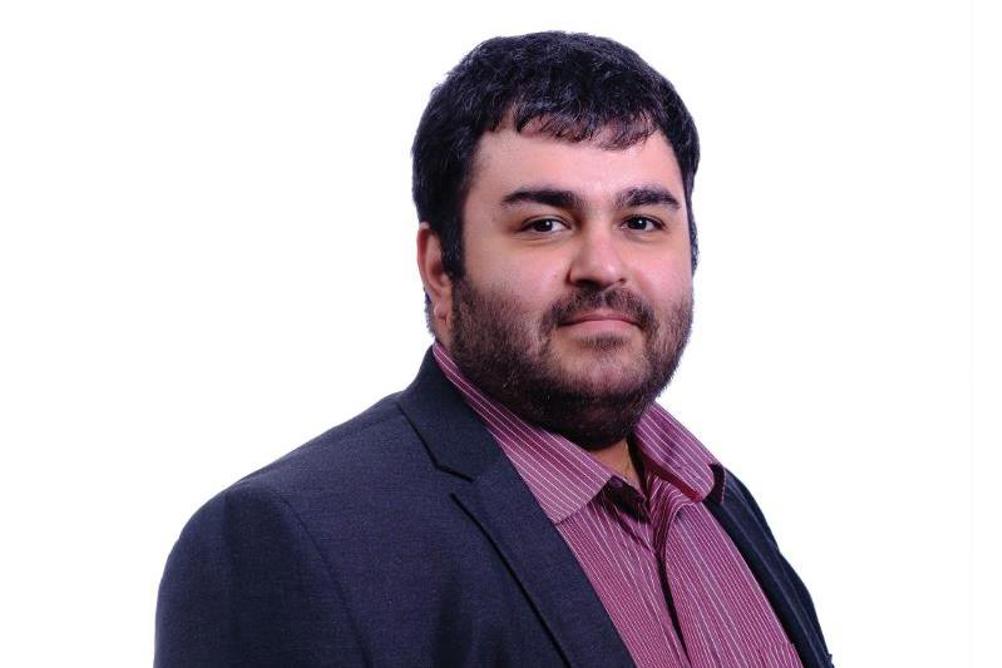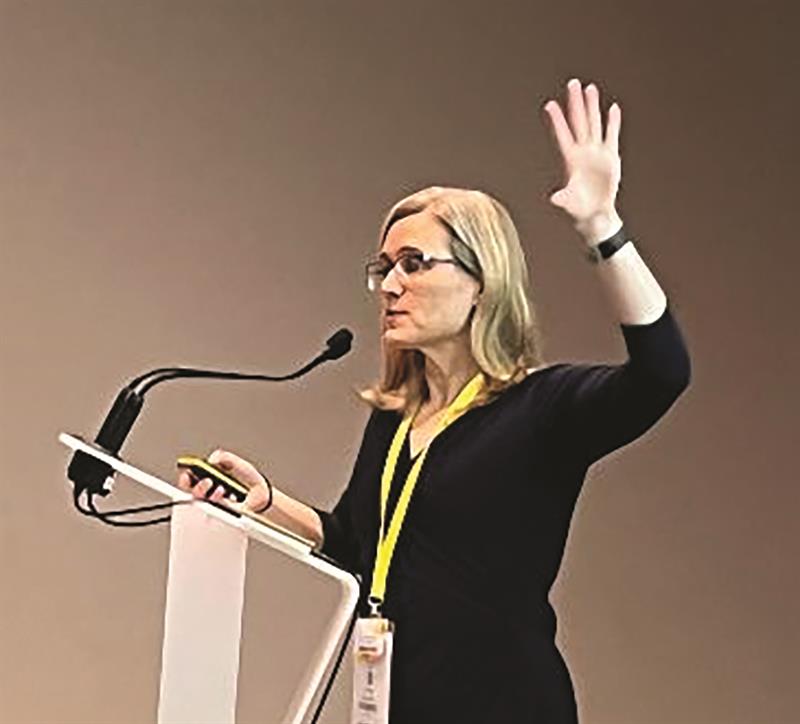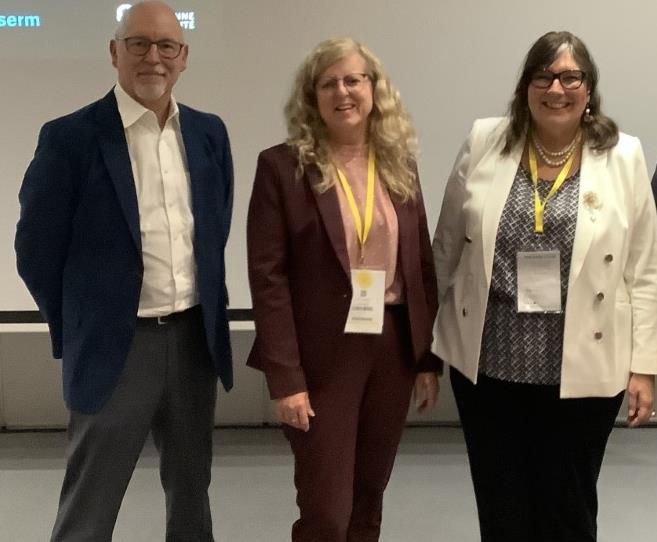
For many years, I have carried on under the misapprehension that the annual Silmo event (figure 1) was only a must for those interested in the latest fashions in spectacle frames and accessories. So, when I was invited to attend the Silmo Academy, a day of lectures from leading experts and researchers from around the world, I was surprised to discover that this side of the event has been taking place for over a decade.
Silmo Academy
The Silmo Academy is the responsibility of the International Opticians Association (IOA), a forum for optician practitioners, industry partners and educators and for whom ABDO hold the secretariat. Event organiser, and familiar face to Optician readers, Elaine Grisdale told me that ‘the IOA are happy to partner with Silmo, to try and promote the skills of opticians around the world and to enhance and develop knowledge.’ If this year’s line-up is to go by, then their aim is well met.
Grisdale is also a member of the Silmo Academy Bursary Committee, along with someone she introduced as ‘JP’. This was Jean Paul Roosen of Vision Solidarité, ex-director of the optical school in Bures-sur-Yvette and founding fellow of the European Academy of Optometry and Optics. Together, the pair were responsible for awarding the 2021 Silmo Academy Grant, an impressive €10,000 to support the research of the lucky winner. This year, the Silmo Academy Laureate was Dr Neema Ghorbani Mojarrad, assistant professor at Bradford University and a key speaker at the event (figure 2).
Dr Mojarrad gave an excellent presentation explaining his research looking into the influence of genetics upon the development of refractive error, and myopia, in particular. With this knowledge, he has started to differentiate and how this may differ between syndromic myopia, that is myopia associated with at least one other medical condition, and non-syndromic myopia. His presentation discussed the many genes and biological pathways involved in myopia development, and some of the genetic data associated with the exciting Born In Bradford (BiB) project.
BiB is a longitudinal cohort looking at the growth and development of children around the Greater Bradford area and West Yorkshire, and has had some great success in numerous fields. ‘Currently,’ explained Dr Mojarrad, ‘we have information on refraction and vision between four and five years of age for over 4,000 BiB children, for whom we also have genetic data. We hope to expand vision data as the children get older so we can follow up on how they progress.’ I strongly recommend readers have a look at the BiB website for more information about this wide-ranging project.
Asked about his award, Dr Mojarrad said, ‘I am honoured and grateful for the support from Silmo Academy and winning their 2021 grant. This has been very helpful in our efforts to try to expand BiB, and working to understand myopia.’
Figure 1: Silmo 2022, a festival of frames, fashion and much more

Alzheimer’s Disease
Boosting the global presence at this year’s Academy, Professor Kelly Malloy (figure 3), a leading specialist in neuro-ophthalmic disease based at the Salus University in Pennsylvania, gave an excellent talk on Alzheimer’s disease (AD). AD causes memory impairment, specifically short-term memory loss, which is the most frequent feature of the disease and is usually its first manifestation. After discussing the pathophysiology of the disease, Professor Malloy focused on the visual impact of AD, which includes:
- Reduced visual acuity
- Reduced colour discrimination
- Reduced contrast sensitivity
- Visual field defects
Figure 3: Professor Kelly Malloy reminds delegates of the significant impact Alzheimer’s disease has on vision
 Interestingly, the drug donepezil (Aricept), an anticholinesterase inhibitor, has been found to improve contrast sensitivity in AD patients. Field defects are mainly inferior in AD and related to ganglion cell damage in superior retina. The degree of field loss correlates well with the degree of dementia.
Interestingly, the drug donepezil (Aricept), an anticholinesterase inhibitor, has been found to improve contrast sensitivity in AD patients. Field defects are mainly inferior in AD and related to ganglion cell damage in superior retina. The degree of field loss correlates well with the degree of dementia.
Visual hallucinations are a common finding with AD and are associated with more rapid cognitive decline. Sixty percent of patients with visual hallucinations could improve with an accurate refraction, while cataract makes visual hallucinations worse. Professor Malloy’s studies have found that hallucinations were not seen with normal visual acuity.
Facial Anthropometry
Another excellent lecture was given by Dr Alicia Thomson (figure 4), director of research and professional development for ABDO. Her work has looked closely at the shape of children’s faces and how this influences the wearing of spectacle frames. Typically-developed white British children show a definite emergence of the nasal bearing surface at a young age from which all parameters surrounding the nose narrowed with age. Chinese children and children with Down’s syndrome have a lower crest height and a shorter front to bend compared to this, and differences are also found in head width and pupillary distance between these two groups.
Figure 4 Left to right, Professor Mark Bullimore, Dr Alicia Thomson and Elaine Grisdale

She concludes that children with Down’s syndrome are not wholly smaller or larger than typically developed white British children, but need their requirements to be incorporated into frame designs to accommodate differences in facial development.
Myopia
Another highlight of the day was the excellent update of where we are with research into myopia management by the always interesting and entertaining Professor Mark Bullimore (figure 4), another visitor from the US. He told us: ‘There may soon exist a continuum of care for myopia, starting with delay of onset and followed by optical and pharmaceutical interventions to slow progression. It may be that all spectacle prescriptions for myopic children incorporate a design that has been shown to slow progression and traditional single vision lenses will no longer be recommended. Likewise, standard single vision soft contact lenses may not be recommended to myopic children and adolescents. Instead, multifocal and orthokeratology contact lenses, or other modalities proven to slow progression, may become the standard of care.’ Keeping up with the evidence is key, he concluded.
And the Silmo Academy is one annual event that supports this goal.
